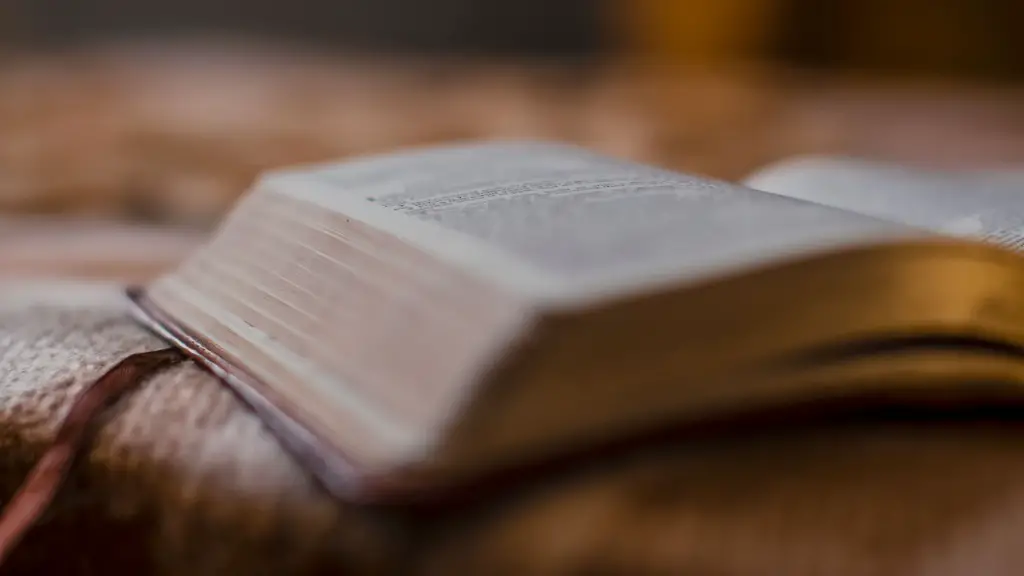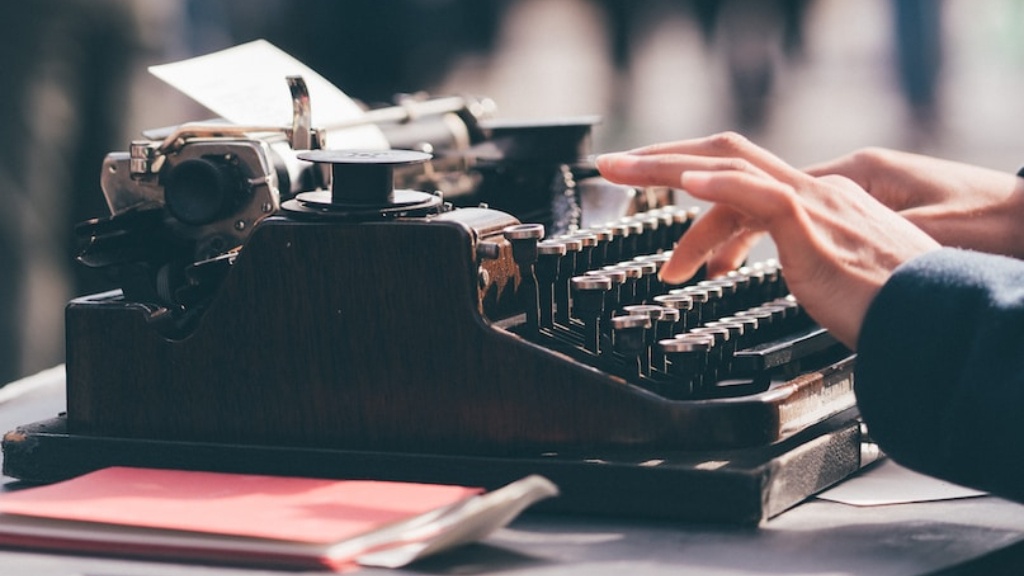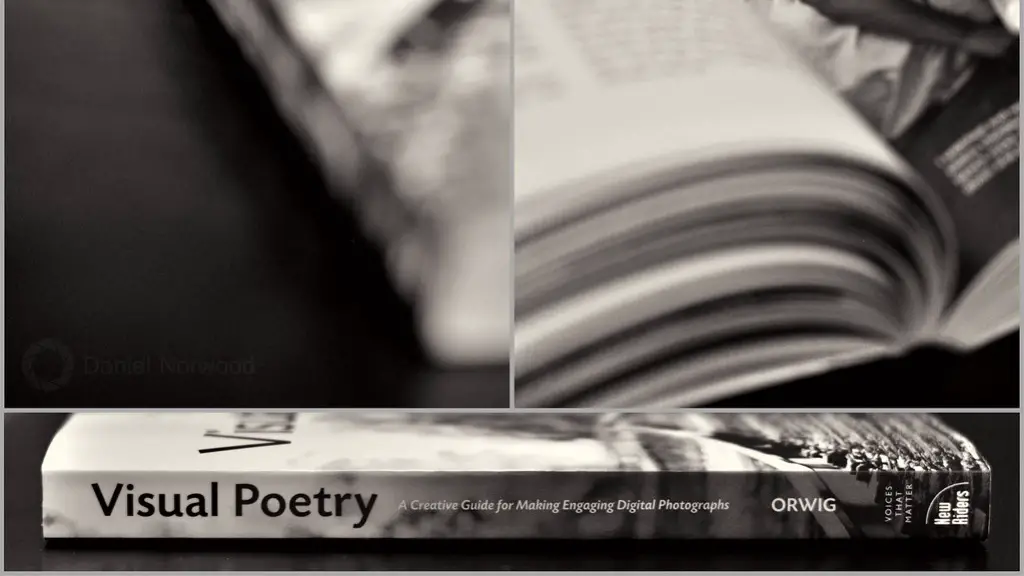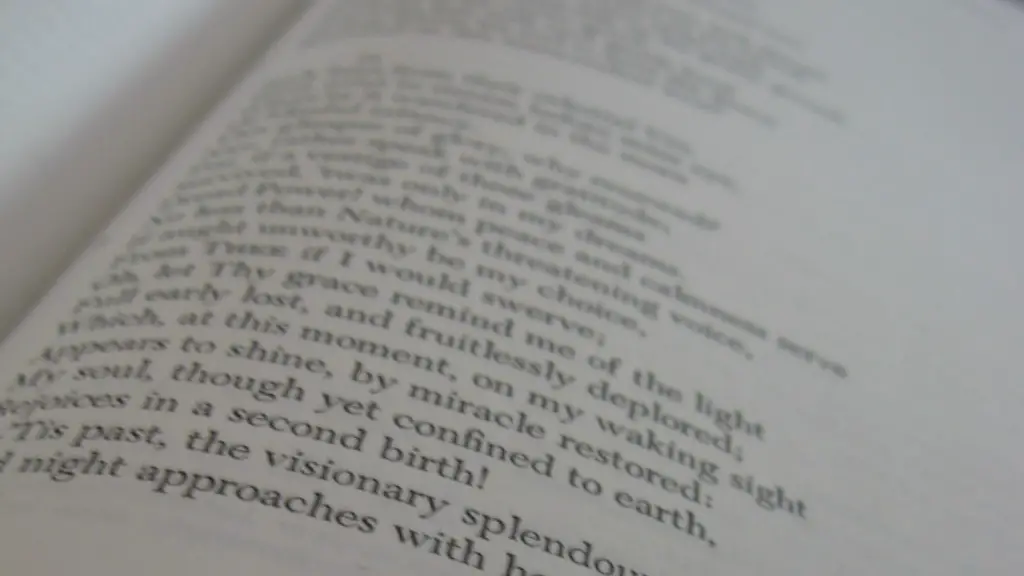Ekphrastic poetry is an interesting type of poetry that engages all the senses. It is a form of creative writing that responds to an artwork, both visually and emotionally. It is an ancient form of expression that has been used for centuries, exploring the relationship between art and literature. This type of poetry has been used as a way to express reactions to artwork and as a tool for teaching and analyzing poetry. It can be seen as a way to explore the meaning and emotions that a particular artwork can evoke.
Ekphrastic poetry is typically composed in response to visual art, such as painting, sculpture, photography and film. In some cases, the artwork may be a direct inspiration for the poem, while in others it may provide the backdrop or atmosphere. The poet may be responding to an individual artwork, an entire museum or gallery, or a particular group of pieces. Ekphrastic poetry can range from the simple and descriptive to the complex and abstract. It can also take on various themes, such as love, grief, fear, beauty and nature.
When writing ekphrastic poetry, it is important to remember that the poem does not try to replicate the artwork; instead, it should add another element or new layer to the existing art. Ekphrastic poetry can be used to reveal the deeper meaning of a painting or sculpture, as well as to explore the emotions and ideas that come from viewing or interacting with the art. Through the combination of art and poetry, the reader is able to gain a further understanding and appreciation of the artwork.
Many experts believe that there is an inherent connection between art and literature. Ekphrastic poetry is a way of illustrating this connection and using both forms of expression to create something new. By utilizing imagery and words in combination, the poet can effectively convey the emotional and intellectual impact of artwork. This type of poem is written in such a way that it allows the reader to feel the same emotions and ideas as the poet.
Ekphrastic poetry can be a powerful form of expression, allowing the poet to create something entirely new that is both meaningful and thought-provoking. By responding to an artwork in a creative and unique way, a poet can offer a new perspective on the artwork and evoke new feelings and ideas for the reader. This form of poetry can be an effective way for poets to reflect on and interpret a variety of topics and themes.
Techniques for Writing Ekphrastic Poetry
Just like any other type of poem, ekphrastic poetry is a craft that takes practice and dedication. Here are some tips to help you create successful ekphrastic poetry:
- Take time to observe the artwork. Spend time looking closely at the artwork and really absorb the colors, textures, lines, and shapes.
- Let your emotions take the lead. Remember that ekphrastic poetry is an emotional engagement with the artwork. Allow your feelings to be your guide.
- Look for the hidden meaning. Through your observations, you may discover deeper meanings and themes in the artwork.
- Challenge your reader. Look for ways to make the poem unique and thought-provoking, so that the reader is encouraged to explore the artwork in new ways.
History of Ekphrastic Poetry
Ekphrastic poetry has a long and storied history that dates back to ancient Greece. One of the earliest examples of this form of poetry can be found in the poem “Iliad” by Homer, in which he describes a shield made for the great hero Achilles. Over the centuries, other famous poets such as Shakespeare, Wordsworth, and Keats have also written ekphrastic poetry. In contemporary times, this type of poem has experienced a resurgence in popularity, as poets and artists continue to explore the connection between art and literature.
Ekphrastic poems can not only capture the beauty and emotion of artwork, but also enrich a viewer’s experience and appreciation of it. The intimate and creative dialogue of art and literature, combined with the universal feelings that can be evoked by artwork, makes ekphrastic poetry a unique and compelling way to experience art.
Contemporary Ekphrastic Poetry
In the modern era, ekphrastic poetry has become a popular form of creative expression. Many contemporary poets use ekphrastic poetry to explore a variety of topics, such as social and political issues, gender, race, identity, nature, and more. Ekphrastic poetry can also be used to describe and reflect on particular artworks, such as Impressionist, expressionist, abstract and surrealist pieces. Additionally, this type of poem can also be used to tell a story or evoke a mood.
Today, ekphrastic poetry can be found in many different mediums, from books and magazines to blogs and social media platforms. Ekphrastic poetry has become increasingly popular as a way to share artwork with a wider audience and create something new and unique. It is also an excellent way for poets to explore their creativity and work with another form of art.
Benefits of Ekphrastic Poetry
Ekphrastic poetry can be a powerful form of expression that allows poets to explore their creativity and deepen their connection to artwork. As a tool for teaching and analyzing poetry, it can help poets identify metaphors, symbolism and hidden meaning in artwork. Additionally, writing ekphrastic poetry is an excellent way to practice observation and analysis skills, as well as develop an understanding of how images and words can work together to create meaning. This form of poetry can also help poets identify common themes, symbols, and motifs in their work.
Ekphrastic poetry can be a fun and challenging exercise that encourages poets to view artwork in a new light. By responding to art in a creative and meaningful way, poets can share their reactions and interpretations with an audience. Through the intense and intimate exploration of artwork, ekphrastic poetry can be an empowering way for poets to engage with art and create something unique and powerful.
Conclusion
Ekphrastic poetry is a fascinating form of creative writing, allowing poets to explore their emotions and ideas and discover hidden meanings in artwork. By responding to artwork in a meaningful and creative way, poets can create something entirely new that is both meaningful and thought-provoking. This type of poem is an effective way for poets to reflect on and interpret a variety of topics and themes. Ekphrastic poetry can be an empowering and enriching experience, as poets engage with art in a new and thoughtful way.



